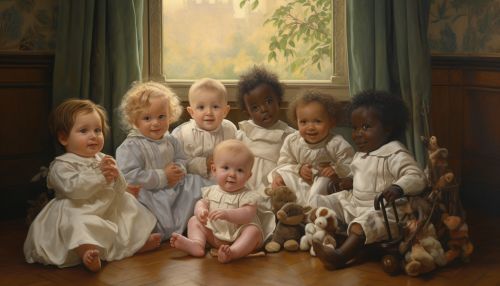Birth rate
Introduction
The Birth rate is a demographic measure often used in population studies. It represents the number of live births occurring among the population of a given geographical area during a given year, per 1,000 of population per year. This term is distinguished from fertility rate, which reflects the number of children born to women of childbearing age.
Determinants of Birth Rate
Various factors influence the birth rate of a population. These include economic conditions, social norms, healthcare access, and government policies.
Economic Conditions
Economic conditions can significantly impact birth rates. In general, wealthier nations tend to have lower birth rates than poorer ones. This is often due to the high costs associated with raising children in developed countries, including education and healthcare expenses. In contrast, in developing countries, children often contribute to the family income from an early age, making them a valuable economic asset.


Social Norms
Social norms and cultural beliefs also play a crucial role in determining birth rates. In certain societies, large families are highly valued, leading to higher birth rates. In contrast, in other cultures, smaller families are preferred, resulting in lower birth rates.
Healthcare Access
Access to healthcare, particularly reproductive healthcare, can significantly influence birth rates. In regions where contraception is readily available and widely accepted, birth rates tend to be lower. Conversely, in areas where access to contraception is limited or stigmatized, birth rates are often higher.
Government Policies
Government policies can also impact birth rates. Policies that support families, such as paid parental leave, affordable childcare, and financial incentives for having children, can encourage higher birth rates. On the other hand, policies that limit family size, such as China's one-child policy, can lead to lower birth rates.
Impact of Birth Rate on Society
The birth rate of a population can have profound effects on society, influencing economic growth, social structures, and government policies.
Economic Growth
A high birth rate can contribute to economic growth by increasing the size of the workforce. However, if the birth rate is too high, it can strain resources and infrastructure, potentially leading to economic instability.
Social Structures
Birth rates can also affect social structures. For example, a low birth rate can lead to an aging population, which can put pressure on social security and healthcare systems. Conversely, a high birth rate can result in a youthful population, which can contribute to social dynamism but also pose challenges in terms of education and employment opportunities.
Government Policies
As mentioned earlier, government policies can influence birth rates. However, the reverse is also true: birth rates can impact government policies. For instance, a low birth rate may prompt a government to implement policies encouraging childbirth, while a high birth rate may lead to policies aimed at population control.
Birth Rate Trends
Birth rates have varied significantly throughout history and across different regions. In general, birth rates tend to decline as countries develop, a trend known as the demographic transition.
Historical Trends
Historically, birth rates were high due to the lack of effective contraception and the need for children to contribute to household labor. However, with the advent of modern contraception and changes in societal norms, birth rates have declined in many parts of the world.
Regional Trends
There are significant regional variations in birth rates. For example, Sub-Saharan Africa has the highest birth rates globally, while Europe has the lowest. These differences can be attributed to various factors, including economic conditions, social norms, healthcare access, and government policies.
Conclusion
In conclusion, birth rates are a critical demographic measure that can provide insights into a population's economic conditions, social structures, and health. Understanding the factors that influence birth rates and their impact on society can inform policy decisions and help address various societal challenges.
